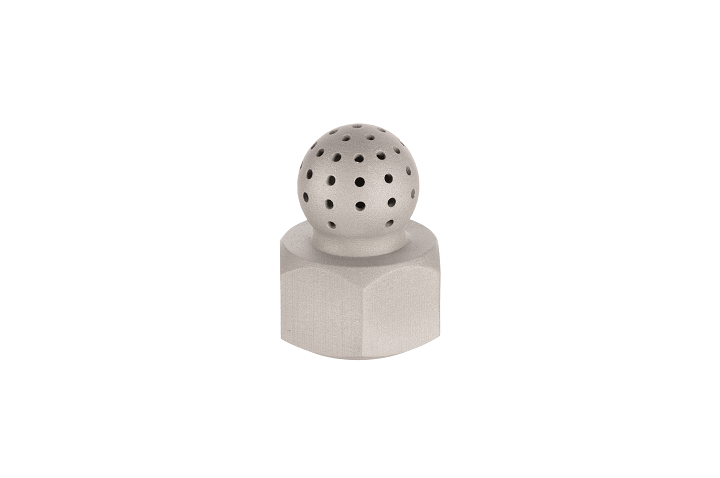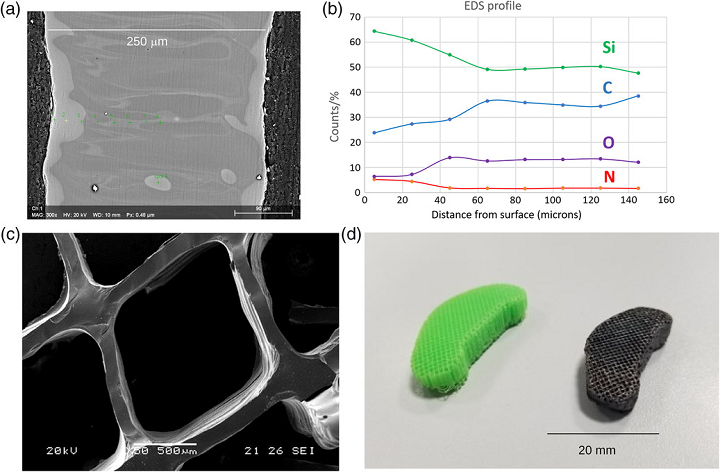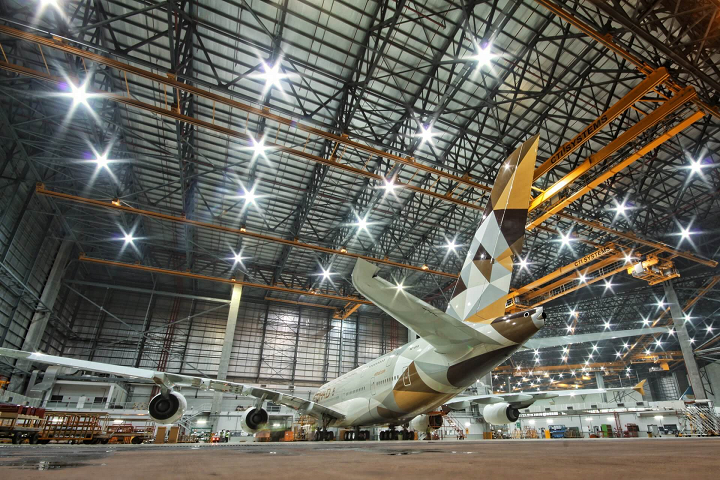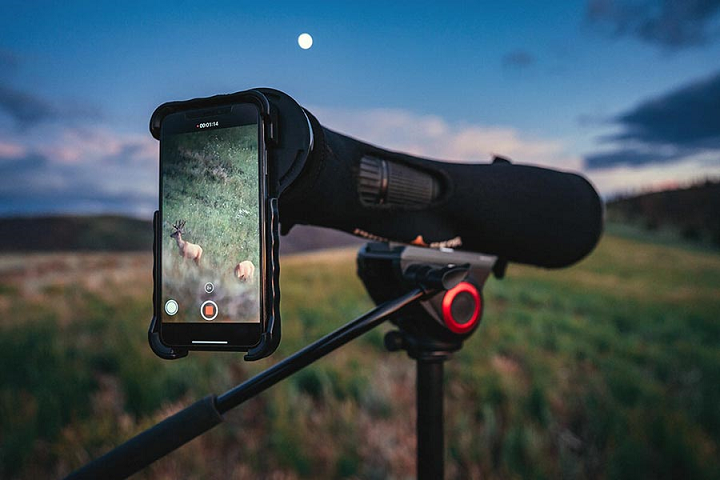In 3D Printing News Briefs today, VELO3D is expanding its team in Europe, and Etihad Engineering is working with EOS and Baltic3D on an R&D project. Moving on from business to materials, Desktop Metal has launched 316L stainless steel for its Shop System, and Western University published a ceramic 3D printing study. Finally, Phone Skope is using Photocentric’s 3D printing solution. Read on for all the details!
VELO3D Adds Two Europe-Based Senior Executives

L-R: Dr. Jose Greses and Xavier Fruh, new Europe-based senior executives appointed by Velo3D to support the growth of demand for industrial metal additive manufacturing in the region.
California-based metal AM leader VELO3D announced that it is growing its team in Europe by appointing two senior executives to support the increasing global demand for industrial metal 3D printing…sure to continue growing now that the company plans to go public this year. Joining VELO3D’s UK-based European Business Development Director Jon Porter, who’s leading the expansion of the company’s commercial operations in Europe, Managing Director Dr. Jose Greses will split his time between Germany and Spain, and Xavier Fruh, Sales Director, will be in France. Dr. Greses has a PhD in laser welding and was most recently at GF Machining Solutions after spending 14 years at EOS, while Fruh, who has an MBA and a Master’s degree in electrical engineering, spent the last four years working on business development in Europe with AddUp.
“Expanding our footprint in Europe comes in response to new demand for the very highest-achievable levels of metal AM quality that only Velo3D provides–as well as design freedom that can unleash innovation and improve competitiveness for industries such as aerospace, oil and gas, and alternative energy,” stated VELO3D’s Founder and CEO Benny Buller.
Etihad Engineering, EOS, & Baltic3D Partnering for R&D
The Middle East’s largest commercial aircraft maintenance, repair and overhaul (MRO) services provider, Etihad Engineering, is working with industrial 3D printing solutions provider EOS and Baltic3D, one of Northern Europe’s largest industrial AM centers, on a research and development project called “FDM and SLS industrial 3D printing technology applicability in serial manufacturing of aircraft interior parts.” Baltic3D will use EOS laser sintering technology—qualified for aerospace applications—as well as other powder bed AM solutions, to print over 2,000 material coupons on the EOS P396 printer. These samples will be tested, in accordance with aviation standards, at Etihad Engineering’s Flammability Laboratory in Abu Dhabi, and Etihad will also provide its engineering reports and analysis after testing has been completed. The goal is to set up a comprehensive testing and manufacturing data set to help aerospace engineers confidently develop part designs for 3D printing.
“As the first MRO airline in the Middle East to receive EASA approval to design, produce and certify 3D printed cabin parts, we are delighted to support Baltic3D and EOS,” said Ahmad Rajei, Acting Vice President Design, Engineering and Innovation, Etihad Engineering. “The launch of this R&D initiative is in line with Etihad Engineering’s position as a leading global player in aircraft engineering as well as a pioneer in innovation and technology.”
Desktop Metal Qualifies 316L Stainless Steel for Shop System

Custom spray nozzles are often used in chemical processing. With conventional manufacturing methods, such nozzles would typically be cast followed by extensive secondary machining on a five-axis CNC. 316L is an essential material for this part because of its excellent material properties, even at elevated working temperatures and while spraying corrosive fluids. 3D printing in 316L on the Shop System can produce the entire order of several hundred nozzles in less than a week with only one secondary thread-tapping operation required, reducing lead times and manufacturing process complexity.
Moving on to materials news, Desktop Metal, which also went public this year, has qualified, and is launching, 316L stainless steel for use on its metal binder jet Shop System. The company’s materials science team validated that the metal material, which features high ductility, corrosion resistance, and great mechanical properties at extreme temperatures, meets the Metal Powder Industries Federation’s MPIF 35 standards when it’s printed and sintered using the Shop System. It’s a good choice for applications in demanding environments, such as surgical tooling, the marine industry, petrochemical processing, and more, and now that it’s available for the Shop System, Desktop Metal customers can enjoy cost-effective batch production of 3D printed 316L stainless steel parts, such as custom spray nozzles, medical device closures, and a watch bevel, which houses the dial and movement within.
“The launch of 316L for the Shop System is a part of an aggressive and extensive materials roadmap to broaden our AM 2.0 portfolio and address a rapidly expanding set of use cases for our print platforms. We are fully focused on developing opportunities for our customers to produce parts competitively with conventional manufacturing, and we are excited to be able to extend our binder jetting technology to meet this need and address key existing and emerging killer applications for 316L in the market,” said Jonah Myerberg, the Co-Founder and CTO of Desktop Metal.
Ceramics 3D Printing Study by Joshua Pearce

a) Backscatter image of cross section of the strut of the final ceramic component with points for EDS analysis. b) EDS profiles of Si, C, O, and N going from the surface to the center. c) SEM image of the fracture surface of the ceramic sample. d) 3D-printed prototype spinal disc for potential prosthetic use in human spine and the converted ceramic counterpart. Note: the EDS profile is not quantitative but provides a qualitative view on the change in composition of elements from the surface to the core.
Dr. Joshua Pearce, a major advocate for 3D printing and all things open source, has moved on from Michigan Tech to Western University’s Department of Electrical & Computer Engineering in Canada, and is continuing his work in 3D printing. Dr. Pearce recently let us know about a study, titled “SiOC(N) Cellular Structures with Dense Struts by Integrating Fused Filament Fabrication 3D Printing with Polymer-Derived Ceramics,” that he published with some colleagues from the University of Trento in Italy. As he explained in an email, ceramic 3D printing is typically low-resolution and inexpensive, or very costly when used for large medical or aerospace projects, and the team’s study is focused on polymer-derived ceramics (PDCs), explaining how they used an open source Lulzbot desktop 3D printer to make fully dense, high-resolution ceramics.
“In our approach preceramic polymers can be shaped in the polymer state and then pyrolyzed to produce different types of ceramics,” Dr. Pearce wrote in his email to us. “Cellular ceramics can be manufactured using this technique. In our study the novel fabrication of cellular ceramics with a two-step process using PDCs is reported. First cellular structures are 3D printed with fused filament fabrication (FFF) using thermoplastic polyurethane and impregnated with preceramic polymer polysilazane. Second, pyrolysis of the impregnated structure produces a self-similar ceramic cellular structure. The impact of 1) catalysts, 2) curing environment, and 3) pyrolysis sequence optimization to form cellular ceramics with fully dense SiOC(N) struts are systemically evaluated. The resultant custom ceramic components can tolerate operating temperatures of 1500 °C and can be manufactured with a desktop 3D printer for less than 5% of the cost of competing methods. The ceramic material is shown to be biocompatible and promotes fast cell adhesion. Finally, early-stage cell activation on the SiOC(N) structure is shown to be tunable by adjusting the porosity with this 3D printing to mimic the bone tissue geometry for bone regeneration.”
To learn more, you can check out the full study here.
Phone Skope & Photocentric Case Study
Finally, digiscoping company Phone Skope is 3D printing its custom-molded smartphone adaptors, using Photocentric’s LC Magna solution, which includes the large format LCD LC Magna printer and post-processing units. Phone Skope worked with manufacturing service provider partner Merit3D to model and create adaptors at speed without expensive, lengthy molding, using its eight Photocentric LC Magna printers, Studio software and 4D-additive, Daylight Magna Duramax resin, and Air Wash L and Cure L2 post-processing units. The two-part adaptor system design is interchangeable and works with most optics and smartphones combinations, and just one LC Magna printer platform can fit up to 52 cases, depending on size. By working with Merit3D to use Photocentric’s AM technology, Phone Skope was able to save thousands of dollars in equipment costs, and cut the time to design a new case model from a couple of months to a couple of weeks.
“Phone Skope’s manufacturing was challenged by the fast-moving nature of the market, requiring its products to be compatible with a huge number of new phone models released every year. In order to create a compatible digiscoping adaptor for a particular phone model, a mould would have to be created for each new case, and there was always a chance that the phone itself may not be a commercial success. This meant that Phone Skope had to choose between which models to support and create moulds for in order to maintain viability,” explained Photocentric’s Sally Tipping. “3D printing was an excellent solution to this problem, giving Phone Skope the flexibility to bring a greater variety of adaptors to market at speed without the cost implications of creating additional moulds. Phone Skope products are renowned around the world for their precision and durability, and so it was also vital that these characteristics were retained without compromise.”
You can read the full case study here.
Subscribe to Our Email Newsletter
Stay up-to-date on all the latest news from the 3D printing industry and receive information and offers from third party vendors.
You May Also Like
Formnext 2024 Day Two: Stand Up
The complaints about the film The Longest Day being set on a beach in France pale in comparison to experiencing Formnext. By the second day, it already feels like the...
UpNano Launches 2PP 3D Printing Service with New NanoPro VT Printer
UpNano, an Austrian company specializing in two-photon polymerization (2PP) additive manufacturing (AM), has launched a service bureau that will offer high-volume output of microscale parts. The new service, NanoPro, will...
Materialise Updates Magics and Partners with BLT at Formnext 2024
At this year’s Formnext, 3D printing software and services pioneer Materialise unveiled a series of software updates designed to enhance customization capabilities in 3D printing for its users. The announcement included...
HP’s New Materials, Tools, and Collaborations to Drive 3D Printing Forward at Formnext 2024
At Formnext 2024, HP unveiled several key developments aimed at advancing additive manufacturing (AM), with new materials, workflow optimization tools, and expanded metal printing capabilities. These announcements reinforce HP’s strategy...






































